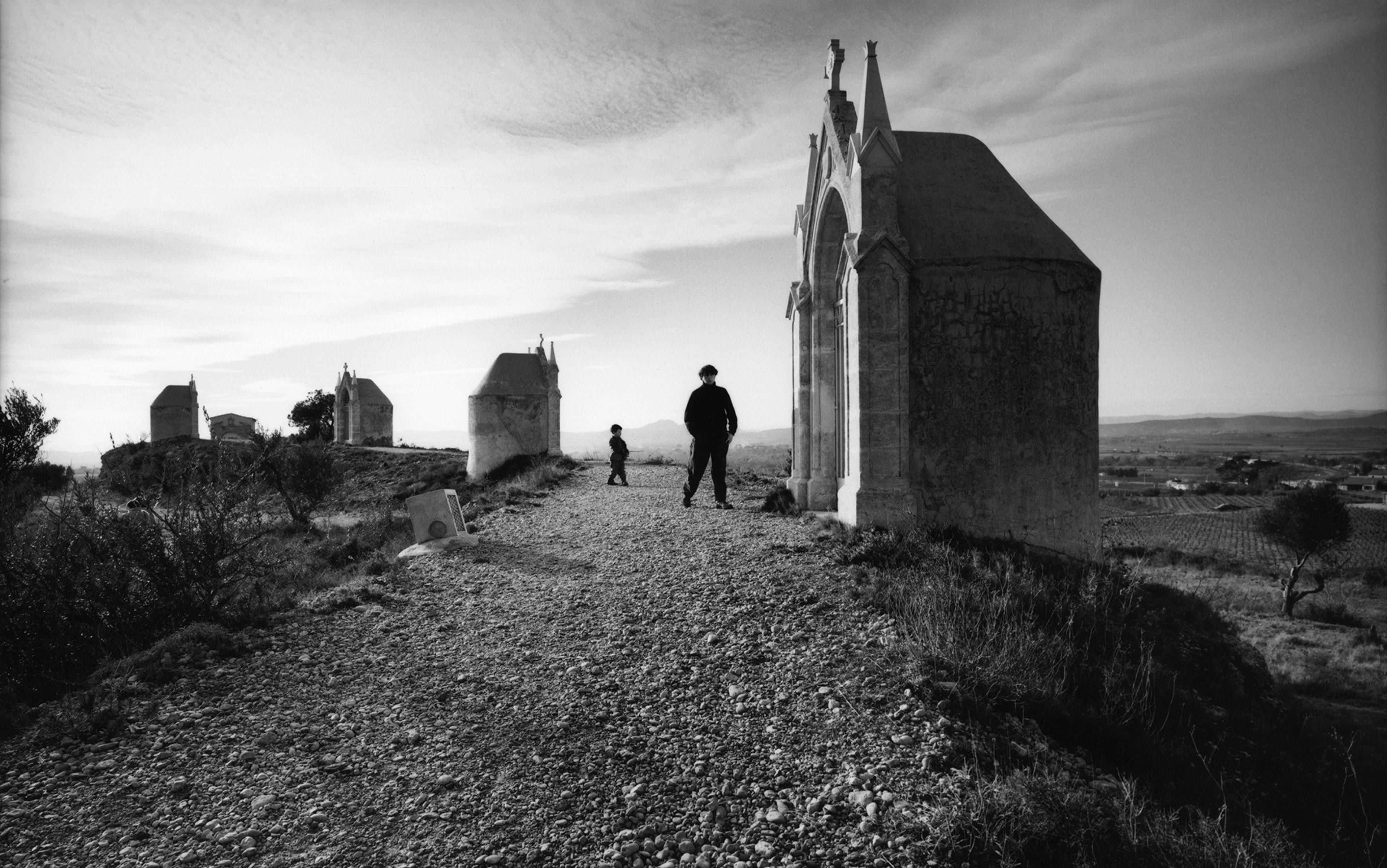‘In moral philosophy it is useful, I believe, to think about plants.’ The words were spoken to an audience of American philosophers in 1989. The speaker was trying to provoke a reaction, but this might have gone unnoticed. After all, Philippa Foot – nearly 70 by then – didn’t look like a heretic.
There is a clue in her reference to moral philosophy. For at least the past 200 years, people who have thought about these things have suspected – or hoped – that morality is the one thing that sets human beings apart from nature (or should one say, the rest of nature?). Nature is the realm of laws, stern and unbreakable, and morality that of freedom. Nature is how things are, morality how they ought to be. If there’s anything to these points of contrast, then what seems at first a mere platitude sounds more like an absurdity. We are not, in the relevant sense, part of nature – not even of that part of nature that consists in our fellow animals, and, still less, plants.
Have we anything to learn about morality from plants? This might well depend on that bigger question: are we, or aren’t we, part of nature? One of the many things that set Foot and her allies in philosophy apart from others of their generation was their refusal to make an either/or of it.
Foot began her philosophical career in a world where it seemed that the big questions of moral philosophy had been settled. It was easy to look around and conclude that here was that unlikeliest of things in philosophy, a consensus. This consensus included both Oxford dons in Britain and the existentialists of the Parisian Left Bank, those setters of intellectual fashion in their respective countries. The differences between the prose styles and personalities of the British and French philosophers – the one scholastic and relentless, and the other lyrical and exploratory – concealed a deeper similarity.
Moral judgments, according to the then-dominant view, weren’t the sort of thing to be true or false, because they didn’t describe the world. They were trying to do something else – express emotion, prescribe actions, or something else of the kind. They were matters of choice, and to think otherwise was to deny that most basic of truths: that human beings construct their values.
Foot came to disagree. She was never a lone voice. At the University of Oxford, once she was elected a fellow of an Oxford college, she had friends who broadly shared her outlook and developed distinctive versions of it over the course of long and fruitful careers. Iris Murdoch and Elizabeth Anscombe would come to be better known than their slightly younger colleague, and Mary Midgley would have a mid-career blossoming as a formidable public intellectual. But Foot was no lightweight. Less prolific than Murdoch, Anscombe and Midgley – her collected writings fit into three slim volumes – she carved out a distinctive place for herself among the thinkers of her generation.
‘I’m a dreadfully slow thinker, really,’ she once told an interviewer. ‘But I do have a good nose for what is important. And even though the best philosophers combine cleverness and depth, I’d prefer a good nose over cleverness any day!’ Her slowness might well have ended her career had she been born in a more professionalised age. But the absence of pressure toward relentless publication meant that she could follow her nose at her own pace, taking seriously one of her favourite dictums from Ludwig Wittgenstein: that it’s hard in philosophy to be slow enough. What mattered in the end, after all, was the work, and the light it cast on the place of the human in the natural world.
Philippa Foot, née Bosanquet, had a more privileged upbringing than most philosophers of her generation, but it was a privilege of the wrong sort. Her father was the prosperous manager of a steelworks in Yorkshire who brought her up in a world of hunting balls. The young Philippa was educated (or left uneducated) by her governesses, who tended to be the sort of women well-informed about a lady’s comportment, but somewhat unsure who had come first, the Greeks or the Romans.
When, for once, she found herself with a governess who had a university degree, the idea of going to university herself occurred to her for the first time. Quite against her mother’s wishes, she worked for a year with an Oxford entrance coach (then, as now, big business) and enrolled herself in a correspondence course in Latin, intending to apply to Somerville College, Oxford. A 19th-century foundation for women’s education, Somerville had a reputation for high academic standards. When she was admitted to study PPE (philosophy, politics and economics), her mother worried for her prospects. A friend comforted her: ‘At least she doesn’t look clever.’
She arrived at Somerville in that momentous year 1939, her clothes conspicuously more impressive than the homemade wartime chic the other women in her year were sporting. She made the acquaintance of Murdoch, Anscombe, and Mary Scrutton (later Midgley). Between the one-on-one or small-group tutorials she received in the traditional Oxford way, and the intense conversations with her peers, she received a philosophical education of great concentration and eccentricity.
The men – both dons and undergraduates – were, for the most part, away. As the women educated in those years later found, this made for an atmosphere of discussion quite unlike the one both before and after the war. With the young men away, there was no one to sustain the compulsive ‘argy-bargy’ – to use the term popular in the 1930s – of the inter-war decades. As Midgley put it in a letter to The Guardian in 2013:
[I]n those wartime classes – which were small – men (conscientious objectors etc) were present as well as women but they weren’t keen on arguing. It was clear that we were all more interested in understanding this deeply puzzling world than in putting each other down.
Foot was sent for tutorials in philosophy to a young man called Donald MacKinnon. Even by Oxford’s demanding standards, MacKinnon was an odd man. He would lie on the floor and beat the walls, brandishing a poker and attacking the fireplace. He was given to painfully long, reflective silences, when it was simply unclear if he could hear what was said to him. But once his terrified students discovered that neither he nor they would come to any serious harm, they would find themselves in the middle of the most exhilarating conversations they had ever had.
Conversations with MacKinnon were wide-ranging, open-ended and intense. There was no attempt to shut up anyone by declaring their claims nonsensical or meaningless. The philosophers of the late 1930s, still reeling from the publication of A J ‘Freddie’ Ayer’s Language, Truth and Logic (1936), had been much given to that sort of thing. Among dozens of other brash claims, Ayer’s classic book – which brought the radical ideas of a circle of intellectuals in 1930s Vienna back home to Britain – had declared that all ethical discourse, being unverifiable, could not strictly speaking be true or false. In expressing a moral judgment, one was really ‘evincing’ one’s emotions or attitudes, no more and no less.
Oddly enough, Ayer saw himself as rescuing the claims of ethics from the dustbin to which he thought a yet earlier academic had inadvertently consigned it. In the early years of the 20th century, the Cambridge philosopher G E Moore thought that he had shown something of great interest about the nature of morality with an argument of devastating simplicity: that the ‘good’, so central to all morality, cannot be the name of a natural property. It can’t, for instance, be another name for pleasure – as he took some Victorian ‘utilitarian’ philosophers to be saying. Surely it is possible to ask of something: ‘Yes, this is conductive to pleasure, but is it good?’ The question feels ‘open’, not yet settled – and that, he thought, could reveal something interesting and deep. If there is such a thing as goodness, it is not to be found in nature, and therefore, not to be investigated by those who make it their business to study nature, ie scientists and their philosophical apprentices.
Most philosophers agreed that there was something to Moore’s idea, but not everyone took it to have the same conclusions. For the Austrian philosophers from whom Ayer got his best ideas, the notion of properties ‘outside nature’ was exactly the kind of unscientific nonsense from which they hoped to rescue their canny, sceptical generation.
Wrong and right, bad and good were all slightly misleading ways of saying – in effect –‘Boo!’ and ‘Hurrah!’. Religion and aesthetics went more or less the same way, all dismissed as worse than false.
If some judgments couldn’t be true and others false, what was there to be said about the Eichmanns of this world?
This style of brazen dismissiveness was alien to MacKinnon, and his attitude rubbed off on his students. In later years, Foot would say that what MacKinnon had taught her was virtue.
Foot graduated and moved to London, to a little attic flat she shared with Murdoch. She took up a job as a government economist, while Murdoch worked for the civil service. The flat was no safe haven. The sound of German planes could be heard through a crack in the roof. Every morning, the women walked to work on streets barely recognisable after the previous night’s air raid. When the raids were particularly intense, the women would huddle in the bathtub under the staircase. Their friendship – for a brief time a romance – was never less than intense.
A few years later, the full extent of the Holocaust came to be known. Could someone looking at photographs of the death camps at Bergen-Belsen and Auschwitz-Birkenau continue to maintain that ethical judgments were ultimately not the sort of thing to be true or false? If some judgments couldn’t be true and other ones false, what was there to be said about, if not to, the Adolf Eichmanns of this world? That he had his attitudes (‘Hurrah genocide!’) and we had ours (‘Boo!’)? Combine that with the further view that there is nothing to make one set of attitudes any better than any other, and one had a position that Foot thought ‘had to be bad philosophy’.
The Viennese positivists’ dismissal of ethical and religious discourse as unverifiable, and therefore merely expressive, was an exciting novelty when the enemy was the ancien régime of clergymen and courtiers. The war changed everything. What had seemed tough-minded and revolutionary now seemed merely complacent. As Murdoch informally put it in a documentary interview in 1972, it betrayed the smug assumption that:
[W]hatever anybody’s likely to think about morals is going to be more or less okay. I mean, one might say it’s a sort of pre-Hitler view. It’s a view which goes with our sort of 19th-century optimism and a feeling of progress and a feeling that people are fundamentally decent chaps, a view which after recent history […] one cannot in general take.
What would a moral philosophy look like if it started from a darker picture of human beings as not, basically, ‘decent chaps’? Part of what animated Foot and her allies was a conviction that the answer to such a question would not be easy or self-contained, would not be the sort of logical proof one could polish off in a few weeks, if one were only clever enough. When they returned to Oxford to take up fellowships at its colleges, their influence was not immediately felt. The clever young men were back from the war, inclined to patronise their female colleagues, and carry on where they had left off.
In the early post-war years at Oxford, photographs from Bergen-Belsen notwithstanding, moral philosophy was not at the forefront of academic attention. Perhaps this was itself a response to the enormity, a quiet acknowledgement that the conventional ways of flaunting one’s moral seriousness – grandstanding, portentousness – were not themselves morally neutral. Perhaps, indeed, this was the lesson of the war.
Even before the war, the style of philosophical conversation had been tending away from the grandiloquent towards the dry and ironic. As Stuart Hampshire, a prominent philosopher from an earlier generation, put it in an interview with Isaiah Berlin in 1972: ‘Even the most solemn questions, solemn in their associations, had to be disinfected by a very calm, committee-man’s tone of voice in speaking about them.’ And of those subjects to which an ironic tone was inappropriate, perhaps it was best not to speak at all.
The moral philosopher who did best under this dispensation was R M ‘Dick’ Hare. He had a good deal to be solemn about. After a brief period as a teenage pacifist, he decided to enlist, and ended up serving in the Royal Artillery. He was taken prisoner by the Japanese in 1942, first tasked to work in pitiless conditions on the Siam-Burma railway, then imprisoned in Singapore until the end of the war. It was in a Japanese prison camp that he began work on the book that made his reputation, The Language of Morals (1952).
At its simplest, Hare’s moral philosophy sought to abandon what was repulsive about the ‘emotivist’ theory of ethics – its boo/hurrah conception of moral judgment – but to retain what in it he thought attractive: its picture of individuals choosing their values freely. In his variation, what one did in making a moral judgment was prescribe some course of action; like expressions of emotion, these couldn’t as such be true or false, but other logical constraints could apply to prescriptions. Values were then chosen against a background of logical constraints, but they were still matters of choice, not of discovery. Hare found repugnant the idea that one could disclaim responsibility for what one did by protesting that one had only been following orders, a feeling of repugnance shared by others in the 1950s when the Nazi war crimes trials had grabbed public attention. ‘There is a point,’ he said in a broadcast on the BBC, ‘beyond which we cannot get rid of our own moral responsibilities by laying them on the shoulders of a superior, whether he be general, priest or politician, human or divine.’
Moral judgments are an attempt, however flawed, to get at something true independently of human choices
Despite the enormous differences in style and tone between the Oxford philosophy of those years and the existentialism then modish in Paris, Hare’s view was uncannily like the one Jean-Paul Sartre had summarised in his cryptic slogan, ‘existence precedes essence’. As Sartre put it elsewhere, human beings do not have an essence – a basic nature – that determines how they must choose: ‘Man is nothing else but that which he makes of himself.’
The view had its attractions, but Foot, Murdoch, Anscombe and Midgley rejected them. As Murdoch put it to a New Yorker journalist, what they were united in denying was the claim that ‘the human being was the monarch of the Universe, that he constructed his values from scratch’. The four of them, by contrast, were interested in ‘the reality that surrounds man – transcendent or whatever’.
Murdoch’s ‘or whatever’ was a reference to the things that divided them: she herself was drawn to a vision of a Universe where ‘the Good’, if not God, was real; Anscombe was a devout Catholic; Foot – in her own words – was a ‘card-carrying atheist’. But all three of them took seriously the claim that moral judgments are an attempt, however flawed in particular cases, to get at something true independently of human choices. Much moral thought – and engaging in moral debate – feels like it is aspiring to get something right, something constrained by things beyond us, not some freewheeling creative act of invention. But is this feeling justified, or is this yet another attempt to pass the moral buck on to the Universe?
Temperamentally unsympathetic both to religious solutions and to mystical ones, Foot looked for considerations that even Hare might recognise. In the beginning, her chosen line of attack focused on unsettling the sharp distinction between ‘fact’ and ‘value’ that she found in Hare and other philosophers of the age. Where, she asked, did this leave such a concept as rudeness? By anyone’s standards, to pronounce some behaviour as rude is to make a value judgment. But there are objective criteria for counting some behaviour as rude (rather than, say, polite or cowardly). We don’t get to choose.
She took the point further: perhaps the reason we cannot freely choose which facts are relevant to whether some action is rude (or cowardly or polite or treacherous or whatever) is that these concepts are related in some way to human good or harm. That, and not some point of logic, is what marks them out as moral evaluations. Only a few years after Hare and Sartre thought that they had buried these old-fashioned ideas for good, Foot was trying to bring essence back.
Over the next few decades, Foot found herself inching her way to a position long thought untenable: that there was no deep difference between the use of ‘good’ when we speak of a tree having ‘good roots’ and when we speak of people or their actions as being good. Hence the unexpected claim to her American lecture audience: ‘In moral philosophy it is useful, I believe, to think about plants.’
Human beings and other animals are, like plants, living things. In all three cases, Foot urged, there is room for speaking of healthy or unhealthy, excellent or defective specimens of their kind. This means that there is room to speak of the qualities conducive to their being healthy or excellent or otherwise. The vocabulary of human virtues and vices – courage, temperance, justice and so forth – belongs among the same structure of concepts. The human virtues, she proposed, are natural excellences, while human vices are natural defects.
To say that vice is a natural defect is not an answer to any question; it is simply a way of interpreting the question
Foot’s thesis has an old lineage indeed, going at least as far back as Aristotle. The influence on the Church of his most important medieval interpreter, Thomas Aquinas, gave it a crucial role in Christian, especially Catholic, thought, which, to this day, is much concerned with the question of what acts and predilections are unnatural. This fact, by itself, can seem at odds with Foot’s avowed atheism, and the liberalism of her social attitudes. What truck could a secular philosopher of broadly liberal opinions have with outmoded notions of natural ‘teleology’ – the idea that things have natural ‘ends’ – now that Isaac Newton, Charles Darwin, Richard Dawkins and others have had their say?
The answer is delicate. Foot had little time for attempts to get from her broad conceptual point to some particular prohibition – on contraception or homosexuality, for instance (on this point, she disagreed with her close friend Anscombe, who stoutly defended the Catholic Church’s position on these matters). An amusingly understated footnote in her final book, Natural Goodness (2001), reads: ‘A graduate student once said that my lectures had first made him see “that to be anti-sex could be immoral”. I liked that.’ Indeed, as she insisted in that book’s postscript, her point had never been to answer all the questions of moral philosophy in one stroke: ‘nothing is settled, but everything is left as it was’. To say that vice is a natural defect is not an answer to any question; it is simply a way of interpreting the question, of telling us where we should be looking.
Like other philosophers before and since, Foot’s achievement consisted in pointing us in a better direction. Instead of looking to logic or language for answers, she suggested that we look to ‘the reality that surrounds man’. Human nature is a complex thing, and understanding it will take all the resources of the sciences – natural and social – as well as history. But the significance of those enquiries will lie ultimately in what they can say about the kinds of lives that might be good for us. And to know that, we must ask: who are we? What do we need – for ourselves, and from each other? And what must we be like to get it?
Foot’s point, from the start, was that we cannot simply choose answers to these questions. There is something to get right here, and everything at stake.






